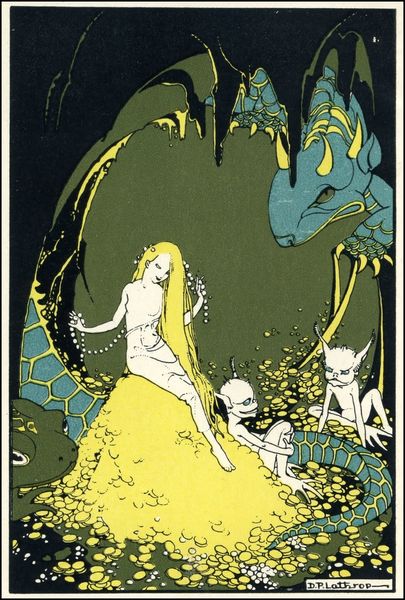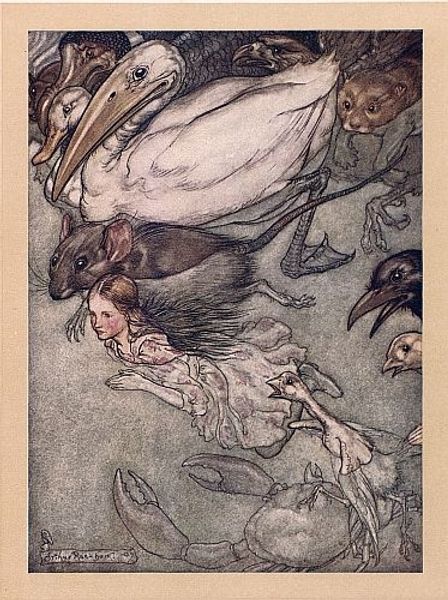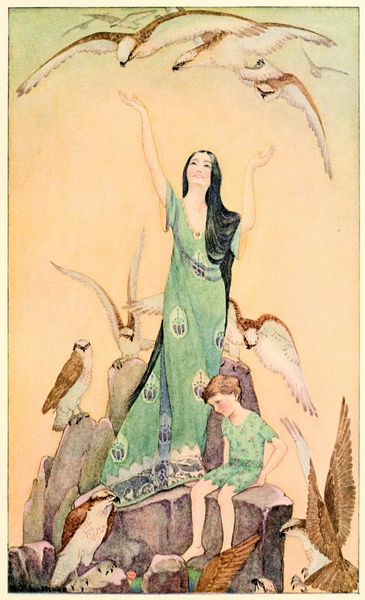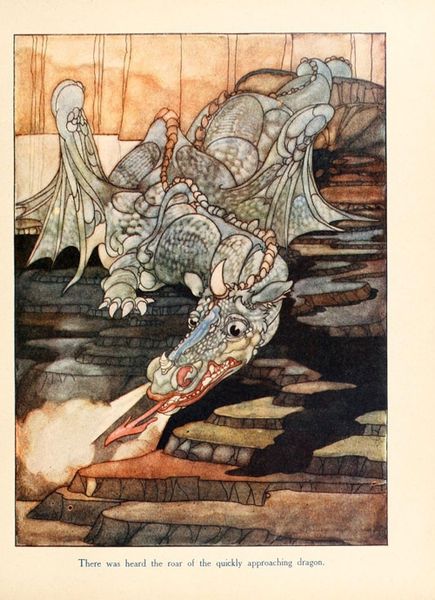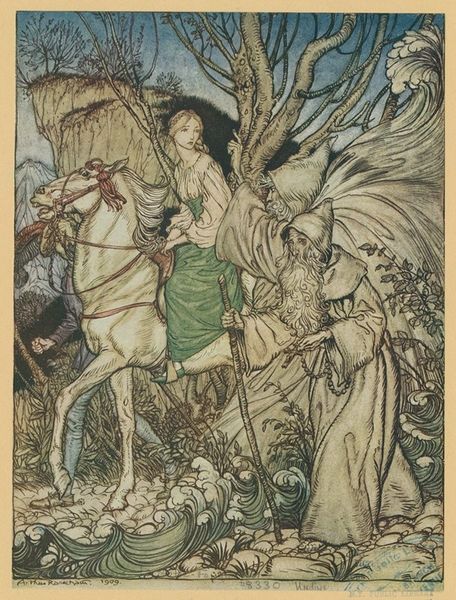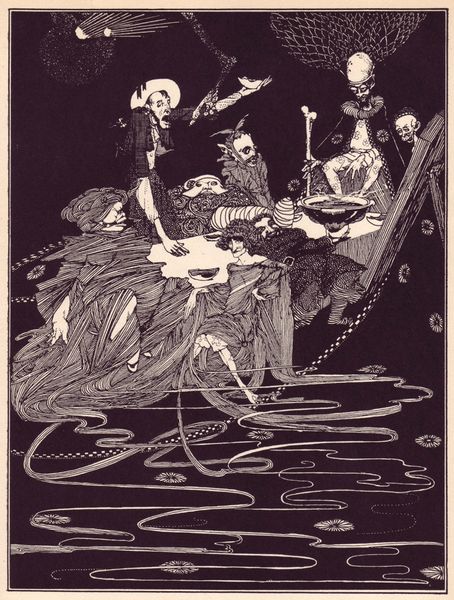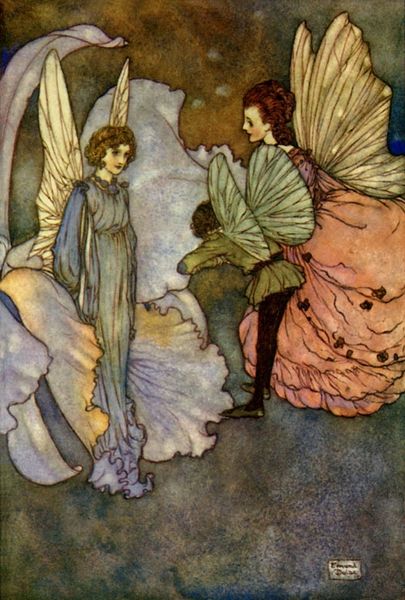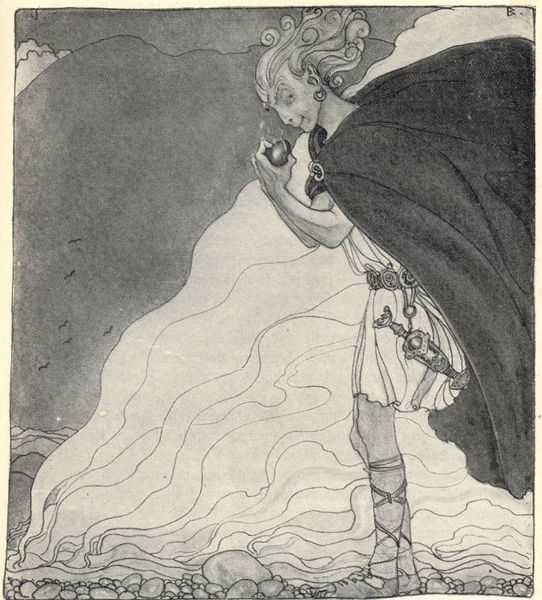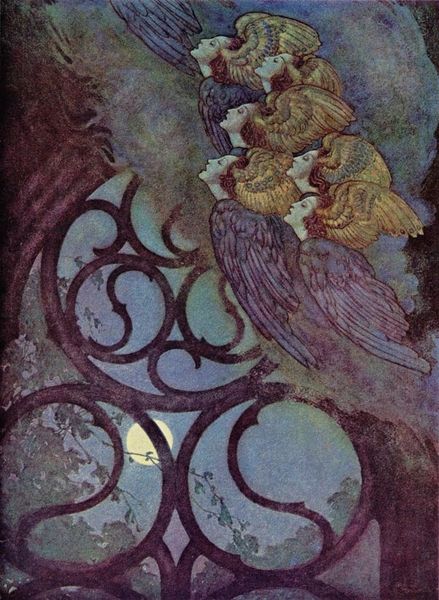
painting, watercolor
#
fairy-painting
#
narrative-art
#
painting
#
fantasy-art
#
watercolor
#
watercolour illustration
#
watercolor
Copyright: Dorothy Lathrop,Fair Use
Curator: This watercolor, "Illustration for Mopsa the Fairy" by Dorothy Lathrop, invites us into a fantastical realm. Editor: My first impression is one of shadowy enchantment. There’s a dreamlike quality, a sense of gentle apprehension in this liminal space populated by fairy and bats, isn't there? Curator: Absolutely. Consider how Lathrop deploys classic fairy-tale symbolism—the child on the cusp of adolescence, the luminous fairy guide—in light of shifting societal perceptions of childhood in the early 20th century. Editor: The bats are particularly intriguing. Across cultures, bats often symbolize transitions, the soul's journey, and even hidden knowledge. The golden trails they leave behind read as symbolic threads of fate, weaving around these two figures, marking the threshold from childhood innocence to understanding. Curator: I read the inclusion of bats as suggestive of the more gothic elements entering children’s literature at this time. There's a parallel to be drawn, perhaps, between the traditional “feminine” role of fairy tales to subtly socialize children into restrictive gender roles, and these darker elements, that present children facing situations where they are required to make choices based on nuanced morality. Editor: Very interesting. But what also draws my eye is how she renders the fairy, her gentle, almost ethereal grace juxtaposed with the sturdy stance of the young boy. Her otherworldliness is heightened by her subtle connection with the swarm of bats around them both. Her presentation of knowledge to the boy leads to his crossing of a sacred threshold. Curator: And there's the quiet subversion in presenting a male child at the mercy of a fairy. Early twentieth-century children's literature became fertile ground to interrogate emerging conceptions of gender and expectations. Editor: Ultimately, the enduring appeal rests, I think, in its symbolic weight, drawing from deep-seated human archetypes about navigating darkness, guidance, and metamorphosis. Curator: For me, its value resides in its ability to hold within itself a layered reading of emerging societal challenges—around identity, power, and moral accountability. It is much more than a children's illustration, a portal to discuss our historical relationship with childhood, power, and agency.
Comments
No comments
Be the first to comment and join the conversation on the ultimate creative platform.

